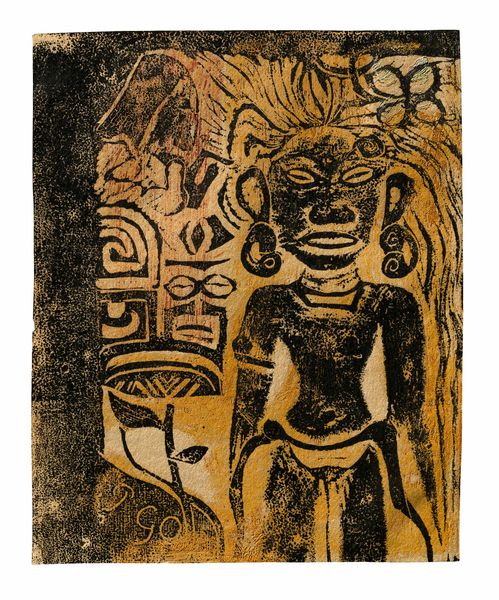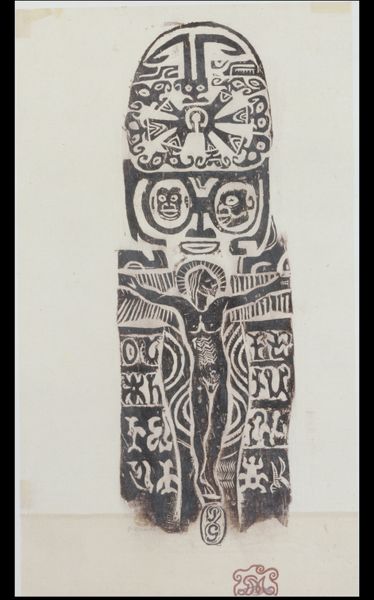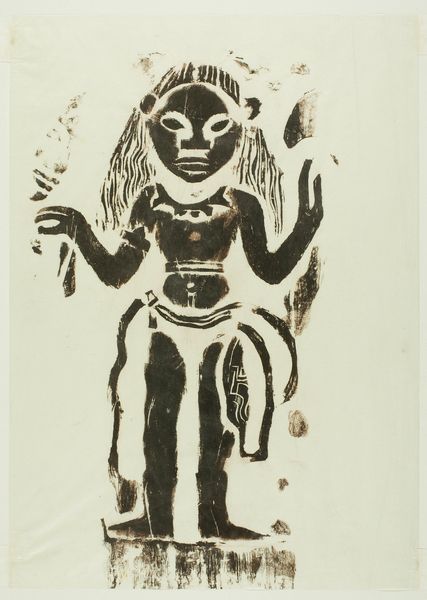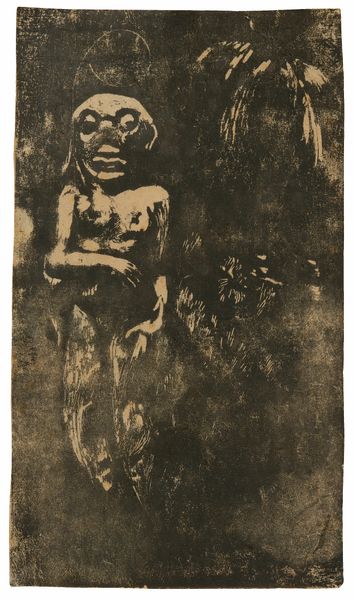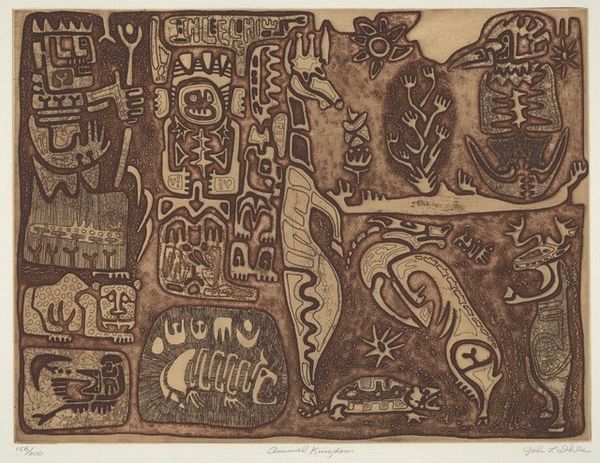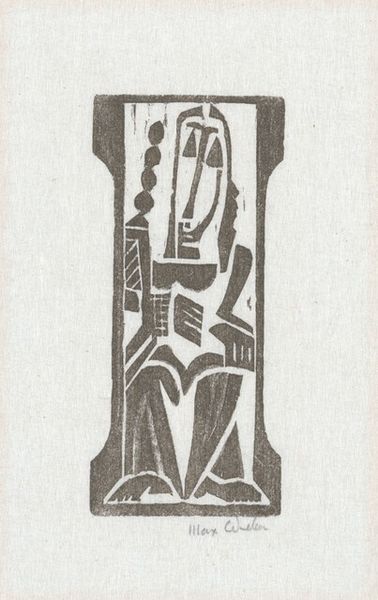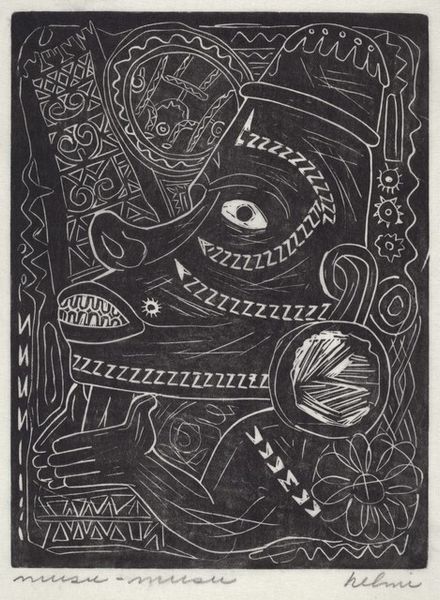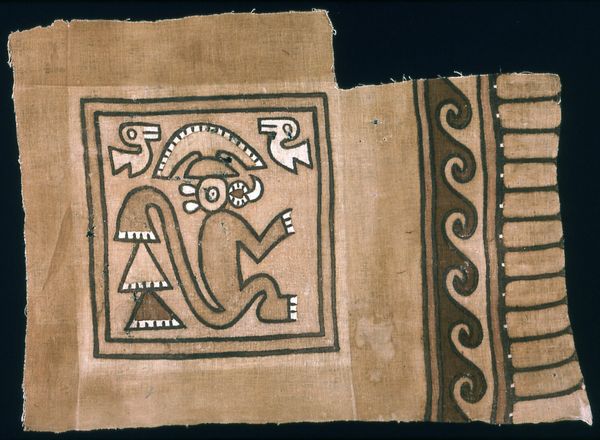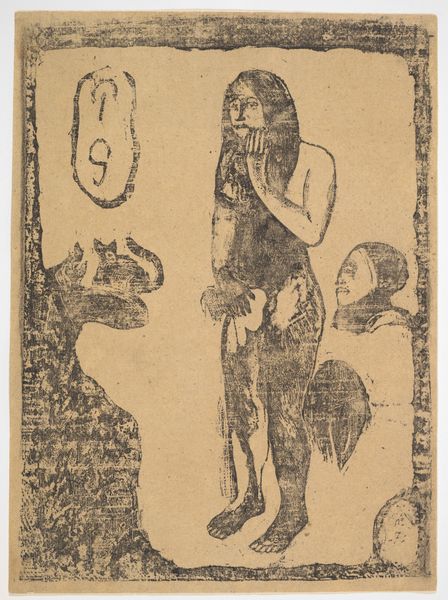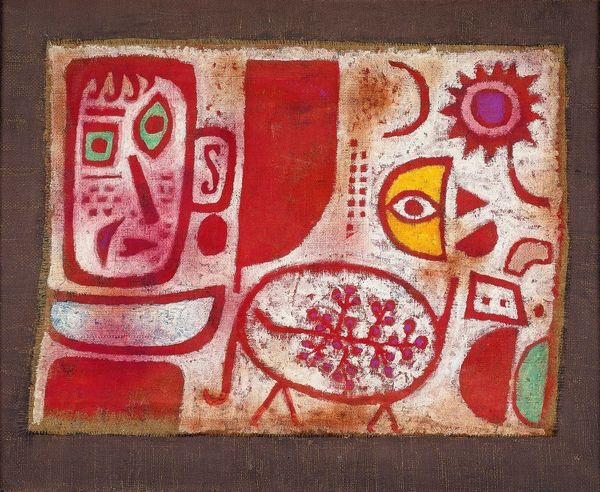
print, paper, woodcut
#
toned paper
#
linocut
# print
#
figuration
#
paper
#
linocut print
#
woodcut
#
symbolism
#
post-impressionism
Dimensions: 142 × 99 mm (image/primary/secondary support)
Copyright: Public Domain
Paul Gauguin created this monotype, Tahitian Idol—the Goddess Hina, now at the Art Institute of Chicago, using brown and blue ink. Immediately, the composition strikes us with its mix of the monumental and the primitive. Gauguin employs a restricted palette and blocky forms to depict Hina, a Polynesian goddess, surrounded by cultural symbols. Note how the rough texture, achieved through the monotype process, destabilizes any sense of classical beauty. The goddess appears strong and iconic, with simplified facial features, yet there is a modernist flattening of space. The background melds into the foreground, challenging traditional perspectival depth. Gauguin’s interest in non-Western cultures led him to represent spiritual figures such as Hina, not as exotic fantasies but as powerful, almost abstract entities. The way he flattens form and space acts as a kind of visual metaphor, suggesting the dismantling of colonialist perspectives and embracing the formal qualities of non-European art.
Comments
No comments
Be the first to comment and join the conversation on the ultimate creative platform.

